#strisores
Photo
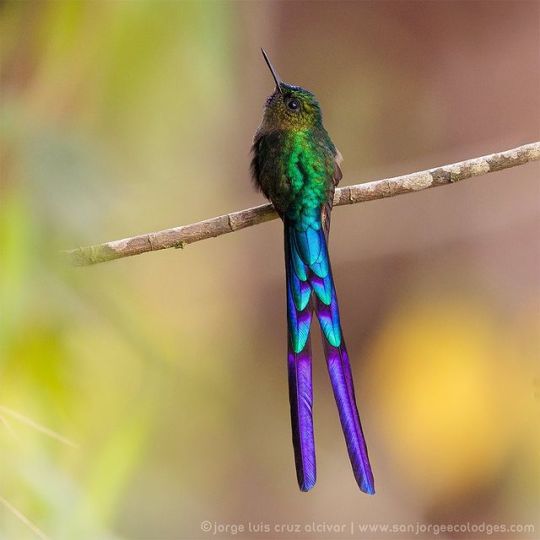
Violet-tailed Sylph
#violet tailed sylph#sylph#hummingbird#Aglaiocercus coelestis#Strisores#Apodiformes#Trochilidae#Aglaiocercus#bird#upl
3K notes
·
View notes
Text
Quechuavis van Els et al., 2023 (new genus)
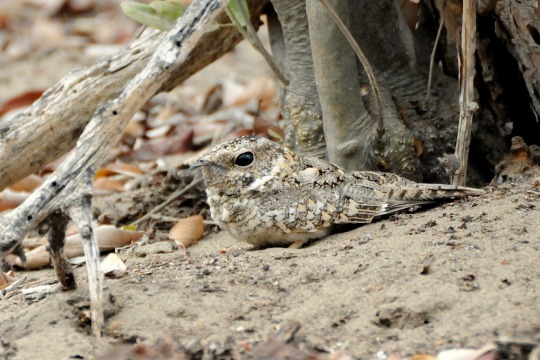
(An individual of Quechuavis decussata, photographed by christian_nunes, under CC BY-NC 4.0)
Meaning of name: Quechuavis = Quechua bird [in Latin]
Species included: Q. decussata (Tschudi's nightjar, type species, previously in Systellura)
Age: Holocene (Meghalayan), extant
Where found: Arid, open habitats in western Peru and northern Chile
Notes: Quechuavis decussata is a nightjar, a group of nocturnal, insect-eating birds. Nightjars typically spend the day camouflaged against the ground and use their wide mouths to capture flying insects at night. The Tschudi's nightjar was formerly considered a subspecies of the band-winged nightjar (Systellura longirostris), and even after being recognized as a separate species, has generally still been classified in the genus Systellura. However, genetic studies have shown that it is not closely related to members of the genus Systellura, nor does it appear to have any particularly close relatives among other South American nightjars. As a result, a new study reassigns the Tschudi's nightjar to a unique new genus.
Reference: Costa, T.V.V., P. van Els, M.J. Braun, B.M. Whitney, N. Cleere, S. Sigurðsson, and L.F. Silveira. 2023. Systematic revision and generic classification of a clade of New World nightjars (Caprimulgidae), with descriptions of new genera from South America. Avian Systematics 1: 55–99.
242 notes
·
View notes
Text
Taxonomy Tournament: Birds
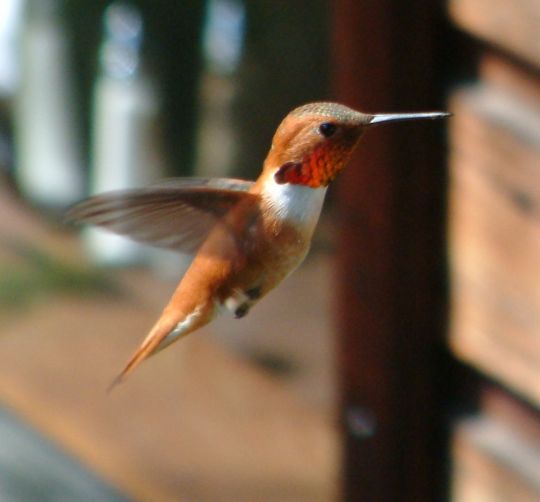

Strisores. This clade is made up of various small birds, such as swifts, hummingbirds, and nightjars.
Pelecaniformes. This order of seabirds contains pelicans, herons, ibises and shoebills
#animals#biology#polls#poll tournament#zoology#swifts#hummingbirds#birds#tetrapods#pelicans#herons#ibises#Strisores#Pelecaniformes#0x38v0x47
74 notes
·
View notes
Photo
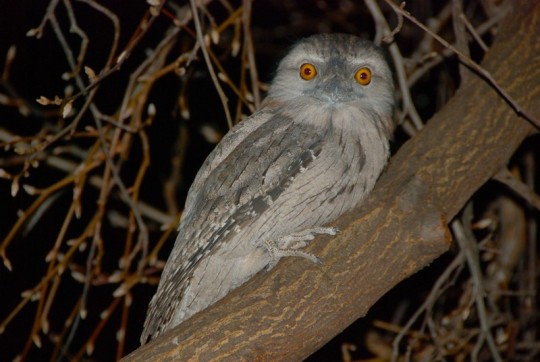
Tawny Frogmouth (Podargus strigoides), Melbourne, Australia
by tpgprice
#tawny frogmouth#birds#podargus strigoides#podargus#podargidae#podargiformes#strisores#aves#chordata#frogmouths#wildlife: australia#wildlife: victoria
144 notes
·
View notes
Text
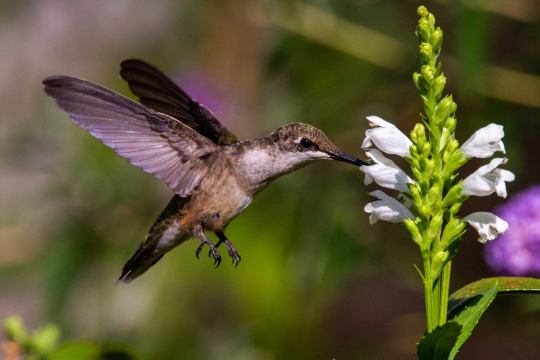

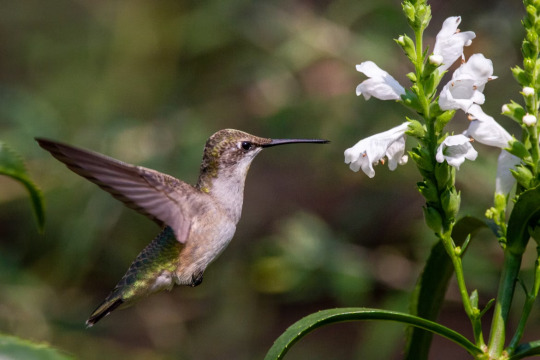
Ruby-throated Hummingbird getting nectar from the Obedient Plant - Backyard, Cordova, Tennessee, USA
Joshua J. Cotten
Scientific name: Archilochus colubris
Mass: 0.11 oz (Adult)
Conservation status: Least Concern (Population increasing)
Life expectancy: 3 - 5 years
Clade: Strisores
Class: Aves
Domain: Eukaryota
The ruby-throated hummingbird is a species of hummingbird that generally spends the winter in Central America, Mexico, and Florida, and migrates to Canada and other parts of Eastern North America for the summer to breed.
#Backyard#Cordova#Tennessee#USA#TNWildlife#Wildlife#Birds#Bird#US#United States of America#United States#North America#Hummingbird#Ruby-throated Hummingbird#Ruby throated hummingbird#Archilochus colubris#Strisores#Aves#Eukaryota#Obedient Plant
5 notes
·
View notes
Text
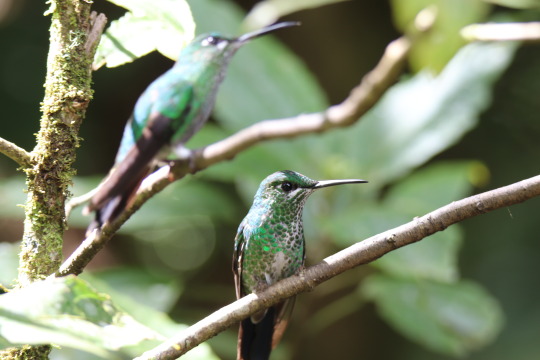
Green-crowned brilliant (Heliodoxa jacula)
TK
#iicraft505#animals#chordata#aves#birds#strisores#apodiformes#trochilidae#hummingbirds#green-crowned brilliant
0 notes
Text
Palestine Sunbird
The end of the ceasefire is heartbreaking but sadly not unexpected. I am still uploading Palestine designs regularly, ALL PROCEEDS will continue to go to my Palestinian best friend to help his loved ones through this war. He is the sweetest person in the world (and a truly brilliant scientist) and he deserves so much better than this. All designs found here.
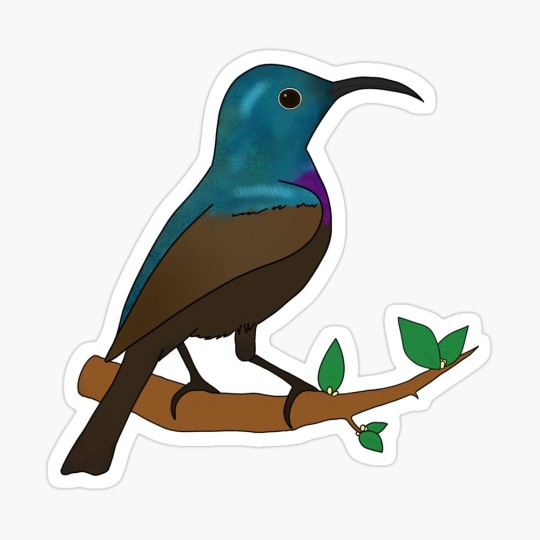

The Palestine sunbird is a beautiful little passerine found around parts of the Middle East and Africa. They look somewhat like giant hummingbirds (though that is entirely convergent evolution, hummingbirds are actually in the same clade (Strisores) as potoos and frogmouths and stuff which is wild to me). These little guys were adopted as Palestine's national bird in 2015. My drawing is available on shirts, stickers, mugs and more.
...and I'm just realizing right after I posted this that the work isn't showing up right now since I tweaked the title in my shop. Hopefully it will be back promptly, until then my Redbubble has plenty of other designs to support my friend including a couple doves with keffiyehs. Sorry, Redbubble is a little neurotic about checking art with "controversial" keywords.
Edit: okay he's back
#palestine#free palestine#gaza#free gaza#save palestine#colonialism#decolonize#فلسطين#social justice#human rights#palestine sunbird#sunbird#ornithology#birdblr#birds#ceasefire#redbubble
853 notes
·
View notes
Text
ITS ALMOST FOSSIL NOVEMBIRB!!!!!
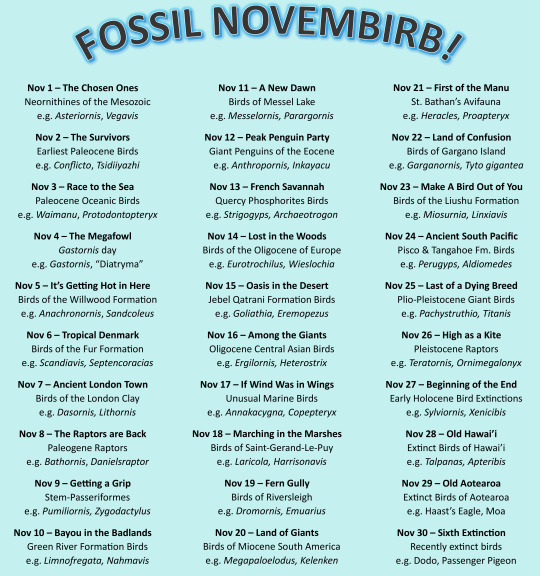
We're going to have a CELEBRATION of FOSSIL NEORNITHINES for this November!!! The extinct members of the only group of dinosaurs we have today!
Each day will have a prompt inspired by the evolution of crown-birds and the amazing forms they have taken over the past 68 million years!
You can respond to each day's prompt however you wish - with drawing and painting, writing, sculpting, music, videos, whatever! Just tag it "#Fossil Novembirb" for me to find it, and it'll get reblogged!
I'm so excited to see the art you guys create!
NOVEMBER 1 - THE CHOSEN ONES
Crown-Birds (Neornithes) known from the Mesozoic Era!
Options include Asteriornis, Teviornis, Vegavis, and "Styginetta"!
These are the only dinosaurs that survived the asteroid!
Theoretically there were also early Palaeognaths and Neoavians - if you want to do some spec evo and hypothesize what you think they might have looked like, go ahead! Follow your dreams!
NOVEMBER 2 - THE SURVIVORS
The earliest birds known after the K-Pg boundary!
Options include Conflicto, Tsidiiyazhi, Australornis, Qinornis, and Qianshanornis!
Birds diverged rapidly after the extinction, so also feel free to dive into spec evo into some of the forms we don't have fossils of!
NOVEMBER 3 - RACE TO THE SEA
The first Marine Neornithines and how they evolved in the early Paleocene!
Includes tons of early penguins like Waimanu, Kumimanu, Sequiwaimanu, Muriwaimanu, and Kupoupou
Also includes the first Pseudo-toothed bird, Protodontopteryx, and the earliest known Tropicbird, Clymenoptilon!
RISE OF THE PENGUINS!
NOVEMBER 4 - THE MEGAFOWL
Gastornis (aka "Diatryma", aka "Zhongyuanus") appeared in the mid-Paleocene and was a feature of the Cenozoic landscape until the end of the Eocene - so we have a whole day JUST FOR IT
Show your love for the Megafowl Gastornis! This giant herbivorous bird was fascinating, and has captured imaginations for decades because of it!
Gastornis is also present in many of the ecosystems described below, such as Willwood, Green River, and Messel, so we also just wanted to make sure people didn't keep picking Gastornis over and over again xD
NOVEMBER 5 - IT'S GETTING HOT IN HERE
The Paleocene-Eocene Thermal Maximum was the most dramatic incident of rapid global warming in the world since the Permian... until today!
It majorly affected the evolution of many things, possibly including birds!
The Willwood Formation straddles the time period of the warming, and has tons of birds that were evolving during that time period! So, for this day, create things involving birds of the Willwood Formation!
Options include the flighted Palaeognaths Lithornis promiscuus and Lithornis plebius; the possible stem-Ostrich Paragrus, the early half-screamer-half-duck Anachronornis, the early owl Primoptynx, and the fascinating stem-mousebird Sandcoleus! And many more!
NOVEMBER 6 - TROPICAL DENMARK
Birds of the Fur Formation, one of the best collections of bird fossils from the early Eocene!
Includes such friends as Scandiavis (an early shorebird), Septencoracias (an early roller), Pellornis (an early rail-esque thing), the utterly mysterious Morsoravis, and the early swift-hummingbird Eocypselus!
This was a tropical shoreline environment with many of the first members of major bird groups we see today!
NOVEMBER 7 - ANCIENT LONDON TOWN
Across the shore from Fur was the London Clay Formation, a lush tropical forest near the warm shallow ocean
In addition to a truly alarming quantity of plant fossils, this is a notable locality for early birds, featuring many early members of major groups much like the Fur Formation
Options include Dasornis (a pseudotoothed bird), Pulchrapollia (one of the Parrot-Passerines of Prey), Nettapterornis (another stem-duck), Nasidytes (an early loon), Charadriisimilis (an early shorebird), Archaeodromus (a trogon-like member of Strisores), Eotrogon (an actual early Trogon), Lithornis vulturinus (another flighted Palaeognath), Prophaethon (another early Tropicbird), and Ypresiglaux (an early owl) - and so many more!
NOVEMBER 8 - THE RAPTORS ARE BACK
Turns out "Predatory Feathered Thing with Really Sharp Foot Claws" is a very successful niche - not only was there potentially one right after the end of the Cretaceous (Qianshanornis), but other raptors were some of the first birds to succeed around the world in the Eocene
So this day is dedicated to the early raptors of the Cenozoic!
Any "raptor" from the Paleogene is valid - so here are some suggestions:
Early Cariamiformes (Seriemas and Kin) like Bathornis, Dynamopterus, Strigogyps, and the first potential Terror Birds like Paleopsilopterus
Early Owls like Ypresiglaux and Palaeoglaux
Early Accipitriformes like Horusornis
Early Falcons like Antarctoboenus, Masillaraptor, and Danielsraptor
And of course the ever popular "Parrot-Passerines of Prey" like Tynskya and Messelastur
NOVEMBER 9 - GETTING A GRIP
Half of all living birds are Passeriformes - aka "Perching Birds" - but this wasn't always the case! For most of Earth's history, many other kinds of tree birds were extremely common
Where did this behemoth group of tiny dinosaurs come from? That's the subject of this day's prompt!
In the Eocene, the first birds closer to Passeriformes than to Parrots evolved, and they came in a huge variety of forms! So on Nov 9th, we're going to celebrate this group's interesting beginnings!
Options for this include Parapsittacopes, Eofringillirostrum, Pumiliornis, Psittacopes, Zygodactylus, Primozygodactylus, Psittacomimus, Sororavis, Morsoravis, and Eozygodactylus! Go wild!
NOVEMBER 10 - BAYOU IN THE BADLANDS
Back to specific ecosystems! We're visiting the world-famous Fossil Lake of the Green River Formation!
This environment, during the Early Eocene, was a thriving tropical lake and forest ecosystem filled with tons of early Neornithines as well as mammals and other animals
Gorgeous fossils have come out of this lake, showing truly amazing detail of feathers and other features for these birds!
So here you can feature Prefica (a potential early Oilbird), the flighted Palaeognath Calciavis, the stem-turaco Foro, the early mousebird Celericolius, the possible shore-bird Nahmavis, a potential cuckoo roller Plesiocathartes, the Flamingo-Duck Presbyornis, the early landfowl Gallinuloides, the swift-hummingbird Eocypselus, and the Frigate Bird Trying at being a Gull Limnofregata - and so many more!
NOVEMBER 11 - A NEW DAWN
We're finally moving on to the middle Eocene - and the Messel Lake ecosystem, famous from the first episode of Walking with Beasts (hence the name of the day)!
(If you're going "wait, that episode acts like nothing happened between the K-Pg and Messel, but here you have 10 days worth of stuff" .... yeah. Walking With Beasts skipped the Paleocene and early Eocene and I am... very pissed. Still.)
You know about the tons of early mammals from this tropical lake ecosystem, but it was filled with tons of early birds as well!
There's the early ostrich Palaeotis, the crane-rail Messelornis, the almost-flamingo Juncitarsus, the freshwater Booby Masillastega, the early hoopoe Messelirrisor, Selmes (a mouse bird with stubby toes), the early ibis Rhynchaeites, the early nightbird Hassiavis, the early swift Scaniacypselus, an early roller with known colors Eocoracias, and the early potoo Paraprefica - and many others!
NOVEMBER 12 - PEAK PENGUIN PARTY
As the Eocene continued, penguins achieved true megafaunal status - there were tons of them, they were huge, and they were all over the oceans of the Southern Hemisphere
While penguin diversity never did recover after the Eocene-Oligocene extinction event, this golden age deserves celebration!
Some of these fascinating peak penguins include Palaeeudyptes, Anthropornis, Icadyptes, Inkayacu, Perudyptes, and Kairuku!
NOVEMBER 13 - FRENCH SAVANNAH
As the Eocene began to dry up and cool down, plains grew across the world where the tropical forests once had been
One of the most famous later-Eocene fossil sites for birds is the Quercy Phosphorites location, a French formation with tons of interesting fossil birds!
Here we start to see the early forms of Neornithine Dinosaurs we saw in the Paleocene-Early Eocene diverge and specialize further - often in particularly weird or interesting ways!
So here we have the duck-ish chicken Paraortyx, the secretarybird Pelargopappus, you can also bring back Dynamopterus from earlier, there is the stem-chicken Quercymegapodius as well as stem-parrots like Quercypsitta, the seriema-like Strigogyps, the sandgrouse relative Archaeoganga, Archaeotrogon shows up again, the swift relative Aegialornis, a potential woodpecker relative Sylphornis, and more owls like Palaeoglaux! Lots of cursorial predators in this ecosystem!
NOVEMBER 14 - LOST IN THE WOODS
As the Oligocene dawned, forests did grow back in Europe, though they were now temperate and dry as opposed to the paratropical rainforests of before
This lead to wide diversification of tree-dwelling birds, and so here we will celebrate the birds of the Oligocene of Europe!
We start to really see modern-esque birds at this point, though of course we still have 30 million years of evolution to go!
Here you can feature the early eagle/hawk Aviraptor, the European Hummingbird Eurotrochilus, the seabird relative Rupelornis, the early woodpecker-toucan Rupelramphastoides, the tody Palaeotodus, the proper Passerine Wieslochia, the possible shorebird Turnipax, the mousebird Oligocolius, the hoopoe Laurillardia, and the trogon Primotrogon which we know the colors of!
NOVEMBER 15 - OASIS IN THE DESERT
The Jebel Qatrani Formation of Egypt shows the beginnings of the famous African Grassland animals, as well as many early members of iconic African animal groups such as primates - and, of course, birds!
Taking place in the early Oligocene, this formation was a tropical/subtropical lowland plain filled with ponds and streams and other waterways - aka, tons of swamps surrounded by plains
As such, this place is infested with waterbirds!
Here we have a fossil relative of the Shoebill Goliathia, as well as the jacanas Janipes and Nupharanassa, the giant stork Palaeoephippiorhynchus, the herons Nycticorax and Xenerodiops, and the mystery Palaeognath Eremopezus!
NOVEMBER 16 - AMONG THE GIANTS
Once again we're just fully committing to the Walking With Beasts nostalgia bc these are the birds we wish were in it more okay we said it
Anyways there were some interesting large birds in the plains of the "Land of Giants" episode so picture these guys alongside the Indricothere etc.
In general we're covering the latest Eocene through the Oligocene of Central Asia
Here we have the enigmatic ratites Ergilornis and Sonogrus, the pseudo-toothed bird Caspiodontornis, the owl Heterostrix, and the stem-flamingo Agnopterus
NOVEMBER 17 - IF THE WIND WAS IN OUR WINGS
We all focus on penguins, but over the Cenozoic, plenty of weird birds have evolved for marine life, and boy are they bizarre!
So for Nov 17, we're focusing on the unusual marine birds of the Cenozoic!
This includes any members of the Pelagornithids - aka the Pseudo-toothed birds - as well as the Plotopterids - the Boobies that became Penguins! Pelagornis and Copepteryx are the best known taxa from each, respectively, but there are plenty more!
But that's not all! We have the flightless auks Miomancalla and Mancalla, the large flightless marine duck Chendytes, and who can forget the weird flightless marine swan Annakacygna! Tons of options to choose from!
NOVEMBER 18 - MARCHING IN THE MARSHES
We're now starting our transition from the Paleogene into the Neogene, beginning with the brackish marsh ecosystem preserved at Saint-Gerand-Le-Puy in France!
This Miocene locality preserves a wide variety of birds that are near modern, but not quite - a sort of "uncanny valley" of bird evolution, all set in a somewhat-salty somewhat-not wetland ecosystem
Options for dinosaurs here include Harrisonavis, a transitional flamingo; the early gull/tern Laricola, the enigmatic duck Mionetta, the stork Grallavis, the pratincole Becassius, the swimming-flamingo Palaelodus, the early cormorant Nectornis, the seed-eating pheasant Palaeortyx, the early loon Colymboides, and the mysterious shorebird Elorius!
NOVEMBER 19 - FERN GULLY
Riversleigh is one of the most famous fossil sites in the world, preserving the evolution of the strange and unique animals known today in Australia, during the Oligocene to Miocene transition
Most often, we focus on the bizarre mammals found at Riversleigh, and for good reason - it's a Marsupial Party! - but the birds here are fantastic as well
This ecosystem was a rich rainforest that transitioned over the period of deposition into a semiarid grassland, and covers 20 million years of animal evolution during that transition
Options for birds here include the butcherbird Kurrartapu, the fossil Sittella Daphoenositta trevorworthyi, the Mihirungs ("Demon Ducks") Dromornis and Barawertornis, the Emuwary Emuarius, the early magpie-goose Eoanseranas, the raptor Pengana with flexible ankles, the earliest known species of lyrebird (Menura tyawanoides), the corvid-like Corvitalusoides, the first known cockatoos, the flightless rail-like bird Australlus, the stiff-tailed duck Pinpanetta, the early logrunner Orthonyx kaldowinyeri, and so many more!
NOVEMBER 20 - LAND OF GIANTS
Y'all were probably wondering when we'd get to the Terror Birds and other interesting dinosaurs of South America, so - here we are!
South America, isolated from the rest of the world until the Great American Interchange, featured a wide variety of bizarre and unique animals - not just mammals, but birds and other reptiles as well!
So for Nov 20th, we're looking at the interesting dinosaurs of the "lost continent" during the Miocene epoch, prior to the invasion of North American taxa!
Any Miocene South American Terror Bird (Phorusrachid) is fair game here, so that includes Brontornis, Patagorhacos, Paraphysornis, Devincenzia, Kelenken, Phorusrhacos, Patagornis, Andalgalornis, Psilopterus, Mesembriornis, and Procariama! Note that they did not all live at the same time or even close to each other in location, so do your research on the taxa you pick!
But Terror Birds weren't the only strange dinosaurs in South America at the time! We have the large Teratorn (vulture-like-thing) Argentavis, the *giant* swimming-flamingo Megapaloelodus, the giant Anhinga Macranhinga, the rhea Opisthodactylus, the penguins Palaeospheniscus, Arthrodytes, and Paraptenodytes, the Cathartid Dryornis, the Jacamar Galbula hylochoreutes, fossil Hoatzins like Hoazinavis and Hoazinoides, the giant stork Leptoptilos patagonicus, and the owl Yarquen!
NOVEMBER 21 - FIRST OF THE MANU
Aotearoa has one of the most unique avifaunas in the world today, and I often call it "Mesozoic 2" because of its almost entirely dinosaur-dominated fauna, especially in the past
All great things have to start somewhere or when, and for Aotearoa, that somewhen was after the landmass resurfaced from the ocean for the first time in millions of years - and was quickly inhabited by all kinds of birds and other reptiles (including tuatara) in the Miocene
This ecosystem was a lake bordered by grassy wetland floodplains and subtropical forests, a bit warmer than Aotearoa today
Dinosaurs here include the early Kiwi Proapteryx, an unnamed early Moa, a truly alarming number of waterfowl including shelducks like Miotadorna, stiff-tailed ducks like Manuherikia, and the possible swan Notochen, the small swimming-flamingo Palaelodus aotearoa, pigeons like Rupephaps and Deliaphaps, an early adzebill Aptornis proasciarostratus, flightless rails like Priscaweka, the lake-wanderer Hakawai melvillei, the herons Pikaihao and Matuku, the giant parrot Heracles, proto-keas Nelepsittacus, and the New Zealand Wren Kuiornis. Tons of fun species to choose from!
NOVEMBER 22 - LAND OF CONFUSION
In the Late Miocene to Early Pliocene, the Italian province of Gargano was cut off from the mainland due to rising sea levels, turning it into an island - an island with lots of really strange birds!
This island was cut off from everything else and completely lacked large predators, allowing for a weird variety of animals to evolve and thrive prior to the island rejoining the mainland during the Ice Age
Strange birds of this ecosystem include the extremely old pigeon Columba omnisanctorum, the giant hawk Garganoaetus, the giant flightless goose Garganornis, the giant barn owl Tyto gigantea, the pheasant Palaeortyx volans, and the swift Apus wetmorei!
NOVEMBER 23 - MAKE A BIRD OUT OF YOU
The iconic animals of the Ice Age and recent prehistory had to come from somewhere, and much of this transition is recorded in the Chinese Ecosystem of the Liushu Formation, deposited between 11 and 6.4 million years ago
As grasslands expanded, this ecosystem transitioned from a forest to a wide plains, and many animals adapted for the grasslands accordingly, leading to the appearance of such mammals as Elasmotheriines, Sabercats, Hyenas, Ambelodonts, and a truly alarming quantity of hoofed mammals
Dinosaurs (Birds) adapted to this ecosystem change as well, of course! While most focus on the mammals of Liushu, we're here to showcase the interesting birds that appeared here as well!
Options here include the the very well preserved Falcon Falco hezhengensis, the vultures Mioneophron and Gansugyps, the diurnal owl Miosurnia, the vocally fancy pheasant Panraogallus, the sandgrouse Linxiavis, the Ostrich Struthio (or Orientornis) linxiaensis, and the probable-Ostrich Sinoergilornis
NOVEMBER 24 - ANCIENT SOUTH PACIFIC
Penguins are Bouncing Back! As the Miocene continued and the Pliocene began, many new types of marine birds showed up and were fossilized in locations in Chile (Pisco) and Aotearoa (Tangahoe)
Tons of interesting birds were preserved in this sort of transitional ecosystem, showcasing how birds adapted to changing conditions as the Miocene-Pliocene climatic turmoil continued
These near shore environments are probably more famous for their other animals - things like the giant shark "megalodon", as well as weird whales like Livyatan and Odobenocetops and aquatic giant sloths (like Thalassocnus) and marine crocodilians - but we're here for those dinosaurs!
Options here from the Pisco Formation include the "Toucan-Booby" Ramphastosula, the Cathartid Perugyps, the Booby Sula figueroae, Pelagornithids, Pelicans, and the penguins Spheniscus urbinai and Spheniscus megaramphus, whereas birds from the Tangahoe Formation include the narrow-beaked albatross Aldiomedes, the giant petrel Macronectes, the more regular-sized petrel Procellaria altirostris, the little penguin Eudyptula wilsonae, and the crested penguin Eudyptes atatu!
NOVEMBER 25 - LAST OF A DYING BREED
We all love Megafuana, even though they are usually the "Live Fast Die Young" kind of species - gobbling up resources and growing too big will do that to you
Usually when we hear the term "Megafauna" we think of Mammals and Non-Avian Dinosaurs, but birds have had their share too - and have lost their share as well
So, mainly to cater to the Megafauna Fanbase, here we dedicate a whole day to the giant birds of recent times - Pliocene through Pleistocene - that we have lost to the dramatic climate change of the Ice Age Era. (Those lost in the Holocene will get their own days, see below)
Options for this day include the giant ostrich Pachystruthio, the Mihirung Genyornis, the Terror Bird Titanis, the giant stork Leptoptilos robustus, the giant swan Cygnus falconeri, the giant Anhinga Giganhinga, and of course - we can't forget our friend - the last of the Pseudotoothed Birds, Pelagornis
NOVEMBER 26 - HIGH AS A KITE
In many ways, the real dinosaur winners of the Ice Age were the flying Birds of Prey, as there were many kinds of raptors during the Ice Age and they exploited the new environment expertly
Nothing like being able to traverse huge distances to find places where there are food, amiright?
So this day is dedicated to the fantastic Raptors of the Ice Age, both volant and not!
Here we have some of the last of the Teratorns like Teratornis itself, the Giant Australian Raptor Dynatoaetus, the Australian Vulture Cryptogyps, Woodward's Eagle Buteogallus woodwardi, the tiny Condor Wingegyps, the large Cuban Eagle Gigantohierax, the wandering vulture Neogyps, the Walking Eagle Buteogallus daggetti, the Giant Cuban Stilt-Owl Ornimegalonyx, and one of the last Terror Birds, Psilopterus
NOVEMBER 27 - BEGINNING OF THE END
Oh Holocene Extinctions. As upsetting as they are, they include some of the best known fossil/subfossil birds, so we decided to spend a little extra time on them than they should have based solely on the time length
Here, we highlight the early losses of the Holocene - those dinosaurs that went extinct at the start, largely due to direct human activity such as hunting in addition to the warming caused by the end of the last Ice Age/Glacial Maximum
Days will be dedicated to both Hawai'i (see below) and Aotearoa (again, below), so this is for everyone else!
So options here include the previously mentioned marine duck Chendytes, the giant flightless landfowl Sylviornis from New Caledonia, the famous Elephant Birds of Madagascar, the flightless clubbing-ibis Xenicibis, the weird puffin Fratercula dowi, the giant Bahama Eagle Titanohierax, the Californian Turkey Meleagris californica, and the flightless "Cave Rail" Nesotrochis of the Greater Antilles
NOVEMBER 28 - OLD HAWAI'I
Many, many, MANY unique dinosaurs live on islands. The islands of Hawai'i are no exception, and these islands have lost many unique and fascinating birds over the years - thanks to human activity, invasive cats, colonialism, and climate change
We couldn't possibly ignore them, so for this day, we are hilghlighting these amazing animals found across the archipelago
There are tons of options, but some of our recommendations include the reverse-platypus/Mole Duck Talpanas, the Stilt-Owl Grallistrix, the flightless ibis Apteribis, the Moa-Nalo like Chelychelynechen, Ptaiochen, and Thambetochen, the Wood Harrier Circus dossenus, Hawai'ian Honeycreepers like Drepanis, Aidemedia, Hemignathus, Chloridops, Akialoa, Rhodacanthis, Dysmorodrepanis, Telespiza, and Vangulifer, the Oloma'o and ʻĀmaui thrushes, ʻōʻō's/Hawai'ian Honeyeaters like the Kioea, Kauaʻi ʻōʻō, and Oʻahu ʻōʻō, the giant Hawai'i Goose, the nēnē-nui/wood-walking goose, the Robust Crow, the flightless Laysan Rail, and the O'ahu Petrel
NOVEMBER 29 - OLD AOTEAROA
We're finally here: Pre-Human Holocene Aotearoa, aka Mesozoic 2, aka The Land Where Mammals Ain't Shit
I love Aotearoa so much. Why wasn't I born there. The universe isn't fair.
The ecosystems were very similar to today - podocarp forests and southern beech forests, grass and tussock plains and shrublands, and plenty of coastal habitats, all usually temperate in terms of climate
All named Moa are fair game. All of them, all named members of Dinornithiformes. So the North Island Giant Moa, the South Island Giant Moa, the Bush Moa, the Eastern Moa, the Broad-Billed Moa, the Heavy-Footed Moa, Mantell's Moa, the Crested Moa, and the Upload Moa. Follow your Moa-Filled Dreams!
Obviously there were more than Moa - not just the living species of Aotearoa still with us, but tons of other extinct forms for Fossil Novembirb. This includes the Adzebills, Haast's Eagle (of course), the whēkau/Laughing Owl Ninox albifacies, the New Zealand Goose Cnemiornis, the New Zealand Owlet-Nightjar, the mehonui Diaphorapteryx, the Long-Billed Wren Dendroscansor, the piopio Turnagra, and the Huia
NOVEMBER 30 - SIXTH EXTINCTION
And, for our last day, we cover recent Holocene extinctions (not on Hawai'i or Aotearoa) - the birds/dinosaurs we have lost in the living past, due largely to colonialism, capitalism, globalism, and climate change
Any bird extinct since 1492 not previously covered is fair game, and there are a lot of them. Today, we honor them, however we can.
Some suggestions include the Dodo (of course), the Cuban Macaw, the Pink-Headed Duck, the Northern Curlew, the Great Auk, the Passenger Pigeon, the Carolina Parakeet, the Ivory-Billed Woodpecker, the Labrador Duck, the Saint Helena Hoopoe, and the Spectacled Cormorant; though there are of course many otherse to choose from as well
Kind of a bummer note to end on, but here we are
Living Birds already get tons of time and attention, so we really don't want to include them here - we love them, but the fossils of the Neornithes world deserve love too! So we tried to cover all of the bases, as best as we could!
Remember, Wikipedia, the Paleobiology Database, The Works of Gerald Mayr, the third volume of "Earth Before Us", and the blogs of myself and @albertonykus and @otussketching are all fantastic resources to look for information about these wonderful animals! Also check out Through Time and Clades' "Dinosaurs: The Second Chapter" series and the Raptormaniacs blog from Albert as well!
HAVE FUN! CREATE WHAT YOU DREAM! AND LOVE CENOZOIC DINOSAURS!
HAPPY FOSSIL NOVEMBIRB!
#Fossil Novembirb#Novembirb#Dinovember#birblr#palaeoblr#Birds#Dinosaurs#Cenozoic Birds#Neornithines#Dinovembirb
613 notes
·
View notes
Text
Welcome to the Supreme Bird Bracket!
Inspired by various creature competitions including @snakeswagbracket @whaleswagbracket @may-the-best-penguin-win @weirdanimal-tournament @sharkshowdown @bestfrogbracket @rodentcompetition
We’ll be voting on tumblr’s favorite birds! Of course, there are too many birds to fit in one bracket. So we’ll do brackets for certain orders or groups of birds with contestants based on submissions. For example, at some point I’ll open up an Owls bracket, and people can submit their favorite owls and vote on them. And once that’s done, I’ll open up a new bracket, like for example Shorebirds, and people can submit their favorite shorebirds and vote on them. At the end of it all, depending on the wishes of the people, I might pit the respective winners against each other for the Ultimate Bird.
I’m going to start out with the Vulture Bracket, because there’s few enough that I can put them in one bracket, and update this pinned post as I go along!
Victorious Vulture: Bearded vulture (Gypaetus barbatus)
Superb Owl: Barn owl (Tyto alba)
Supreme Shorebird: Little auk (Alle alle)
Apodiformes (hummingbirds and swifts): Organizing
Other Strisores: Accepting nominations here
200 notes
·
View notes
Text

With recent advances in genetic sequencing and analysis, we now have a pretty good idea of how most modern vertebrate animals are related to each other. One of the biggest remaining mysteries in vertebrate evolution (and a major theme of my own research), however, is the relationships among the major groups of living birds.
There are some things that we all agree on about the bird family tree (which in some cases were already recognized before the rise of genetic studies), a big one being that modern birds can be divided into two major branches: Palaeognathae (ostriches, emus, and their close relatives) and Neognathae (all other living birds). Neognathae is in turn divided into Galloanserae (chickens, ducks, and their close relatives) and Neoaves (all remaining birds, which constitute 95% of living bird diversity).
Despite birds being one of the most intensely studied animal groups, however, essentially none of the large-scale genetic analyses that have been done on them so far have agreed with each other regarding how the major groups within Neoaves are related.
A new study by Stiller et al. (2024) might represent a big step forward in solving this mystery. Their results suggest that Neoaves can be divided into four major groups.
Mirandornithes: Flamingos and grebes. Stiller et al. found that all other members of Neoaves are probably more closely related to each other than to this group.
Columbaves: Consisting of two major subgroups, Otidimorphae (cuckoos, bustards, and turacos) and Columbimorphae (pigeons, sandgrouse, and mesites). Notably, Columbimorphae has been found by some earlier studies to be more closely related to Mirandornithes, but a second paper that was published on the same day by some of the same authors as Stiller et al. (2024) reported evidence that this previous result was probably caused by misleading similarities between the genetic sequences of Columbimorphae and Mirandornithes.
Elementaves: Consisting of Gruiformes (cranes and their close relatives), Charadriiformes (shorebirds), Strisores (hummingbirds, swifts, nightjars, and their close relatives), Phaethoquornithes (many waterbirds, including penguins, albatrosses, and herons), and the engimatic hoatzin. The exact relationships among these groups are still somewhat unclear; for example, Stiller et al. found the hoatzin to be most closely related to gruiforms and shorebirds (as had been suggested by an earlier study), but support for this result was not high. The hoatzin remains the single most difficult bird species to place in the bird family tree. The name Elementaves was newly coined by Stiller et al., referring to the fact that this group includes species specialized for life in the water, on the ground, and in the air (corresponding to the classical elements of water, earth, and air), as well as birds named after the sun ("fire"), such as the tropicbird genus Phaethon (Ancient Greek for "sun") and the sunbittern. This means that there is now a scientific basis for parodying Avatar: The Last Airbender using birds.
Telluraves: A big group consisting primarily of tree-dwelling birds, including songbirds, parrots, woodpeckers, kingfishers, and the various groups of birds of prey. An interesting result found by Stiller et al. is that owls are likely closely related to accipitrimorphs (hawks, eagles, vultures, etc.), which not all previous genetic studies had supported.
Stiller et al. (2024) provide further evidence for some bird relationships found by earlier analyses, but their results still doesn't exactly match those of any single previous study, so what makes this different from all those attempts that came before it? One is the amount of data. The genetic dataset analyzed by Stiller et al. was many times larger (both in terms of sequence length and the types of genes examined) than any study of this sort that had previously been done on birds. They also included over 360 bird species, which is more than what most previous studies had. Furthermore, they ran numerous tests to determine how the amount of data, number of species, and types of genes analyzed affected their findings, and in doing so were able to show that most of their results were relatively robust, or at least better supported than alternative hypotheses.
Another point of contention regarding the evolution of Neoaves is when the group originated. Were there already many neoavian lineages around during the Late Cretaceous, or did they mostly diversify following the mass extinction event that ended it? In the 2000s and early 2010s, studies trying to estimate the ages of bird groups based on rates of genetic evolution tended to find an older origin for Neoaves, but the majority of newer studies favor a younger origin, with most or all modern neoavian groups appearing after the Cretaceous (though one paper from earlier this year by a different team of authors advocated for older ages). Informed by recent studies on fossil birds, the results of Stiller et al. add further support for a more recent, mainly post-Cretaceous diversification of Neoaves (which I happen to think is more plausible than deep Cretaceous origins).
This almost certainly won't be the last word on these controversies by any means. However, at the moment I'm willing to tentatively consider Stiller et al. (2024) the closest we've gotten to approximating the true family tree of birds, and that is not a declaration I'd make lightly.
18 notes
·
View notes
Text
i knew about the clade of birds strisores before but i think i forgot or didnt realize hummingbirds were included in it too???? like nightjars, oilbirds, potoos, and frogmouths being related to each other makes a lot of sense. they all look absolutely bonkers in similar sorts of ways. i had no idea hummingbirds and swifts were so closely related to each other but when i think of that it starts to make more sense bc swifts and treeswifts i can see similarities with both other strisores and hummingbirds.
but god. as a whole just what an insane evolutionary grouping of birds. just a bunch of birds that in some way or another you look at them and are like. What. thats not how birds usually are how are you so absurd!!!
7 notes
·
View notes
Text

Fiery-throated Hummingbird
#fiery throated hummingbird#hummingbird#Panterpe insignis#Strisores#Apodiformes#Trochilidae#Trochilinae#Lampornithini#Panterpe#bird#upl
322 notes
·
View notes
Text
Eocypselus geminus Mayr & Kitchener, 2024 (new species)
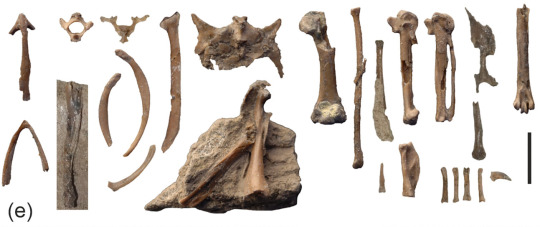
(Type specimen of Eocypselus geminus [scale bar = 5 mm], from Mayr and Kitchener, 2024)
Meaning of name: geminus = twin [in Latin, referring to its similarity to E. vincenti]
Age: Eocene (Ypresian), 54.6‒55 million years ago
Where found: London Clay Formation, Essex, U.K.
How much is known: Partial skeletons of two individuals, representing part of the skull and multiple limb bones.
Notes: E. geminus was a close relative of apodiform birds (the group uniting swifts and hummingbirds). Members of the genus Eocypselus probably looked similar to modern swifts, though they had shorter wings and were better adapted for perching (whereas swifts prefer to cling to vertical surfaces such as cliff faces and tree trunks).
Two species of Eocypselus had previously been named: E. vincenti from England (also from the London Clay Formation) and E. rowei from the United States. Along with the also newly-named E. grandissimus and E. paulomajor, E. geminus suggests that a great diversity of apodiform-like birds lived during the Eocene in what would become the United Kingdom. E. geminus differed from E. vincenti in minor details of the wing bones, from E. rowei in having relatively longer feet, and from E. grandissimus and E. paulomajor in being noticeably smaller.
Reference: Mayr, G. and A.C. Kitchener. 2024. New fossils of Eocypselus and Primapus from the British London Clay reveal a high taxonomic and ecological diversity of early Eocene swift-like apodiform birds. Ibis advance online publication. doi: 10.1111/ibi.13323
34 notes
·
View notes
Text
Taxonomy Tournament: Birds

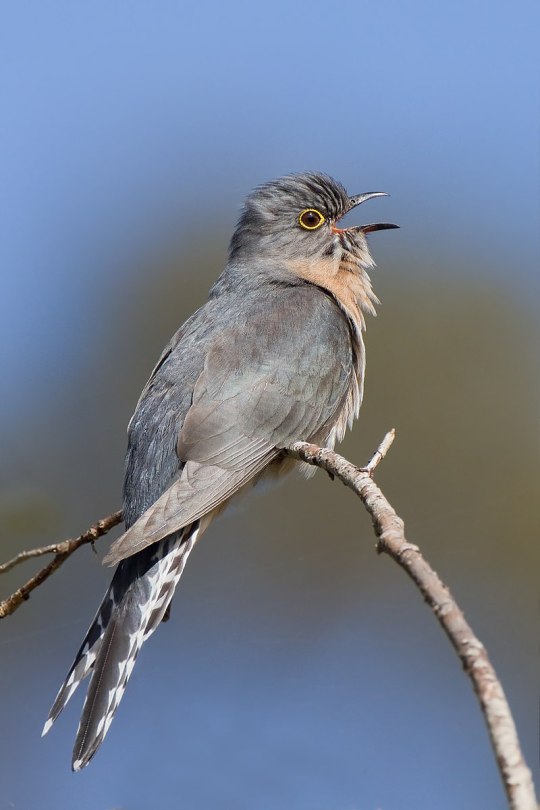
Strisores. This clade is made up of various small birds, such as swifts, hummingbirds, and nightjars.
Cuculiformes. This order is made up of cukoos, including roadrunners.
#animals#biology#polls#poll tournament#zoology#swifts#hummingbirds#birds#tetrapods#cuckoos#roadrunners#Strisores#Cuculiformes#0x38v0xc7#animal tournament#Animal Tournament Round 1
68 notes
·
View notes
Text
What form would your daemon take?

Your daemon would take the form of a strisore! Those who have strisore daemons are introverted and unusual people who have strong intuition. They are relentlessly driven and contemplative, often concerning themselves with the broader picture or deep questions that others don't see.
What strisore form would your daemon take?

Your daemon would take the form of a treeswift! You are a cooperative and dutiful individual who enjoys success. More so than others with strisore daemons, those with treeswifts are high achievers and bond tightly with their loved ones; they tend to be slow and steady workers, and they may be particularly meticulous in their technique. They tend to be more wary of newcomers and are protective over their own ideas.


#long post#i will believe in myself. ( T A I L S )#i tried to get to atlanta on a peach blossom highway. ( M U S I N G S )#it all adds up. ( G A M E S )
5 notes
·
View notes
Text



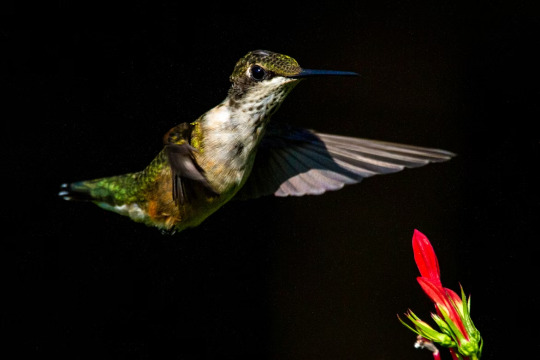
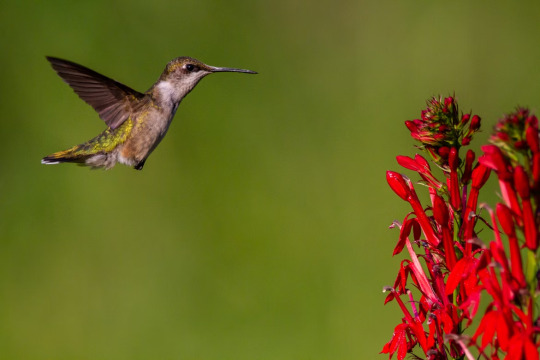


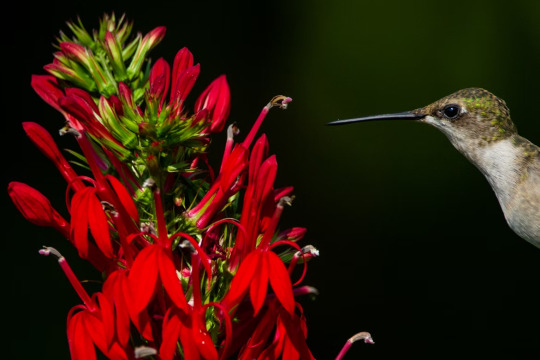
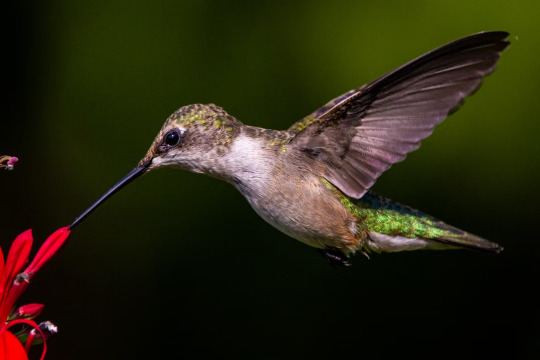
Ruby-throated Hummingbird next to a wild cardinal flower - Riverwood Farms Lake, Memphis, Tennessee, USA
Joshua J. Cotten
Scientific name: Archilochus colubris
Mass: 0.11 oz (Adult)
Conservation status: Least Concern (Population increasing)
Life expectancy: 3 - 5 years
Clade: Strisores
Class: Aves
Domain: Eukaryota
The ruby-throated hummingbird is a species of hummingbird that generally spends the winter in Central America, Mexico, and Florida, and migrates to Canada and other parts of Eastern North America for the summer to breed.
#Riverwood Farms Lake#Memphis#Tennessee#USA#US#United States#United States of America#North America#Birds#Bird#Wildlife#TNWildlife#Wild Cardinal#Cardinal Flower#Hummingbird#Archilochus colubris#Strisores#Aves#Eukaryota
3 notes
·
View notes